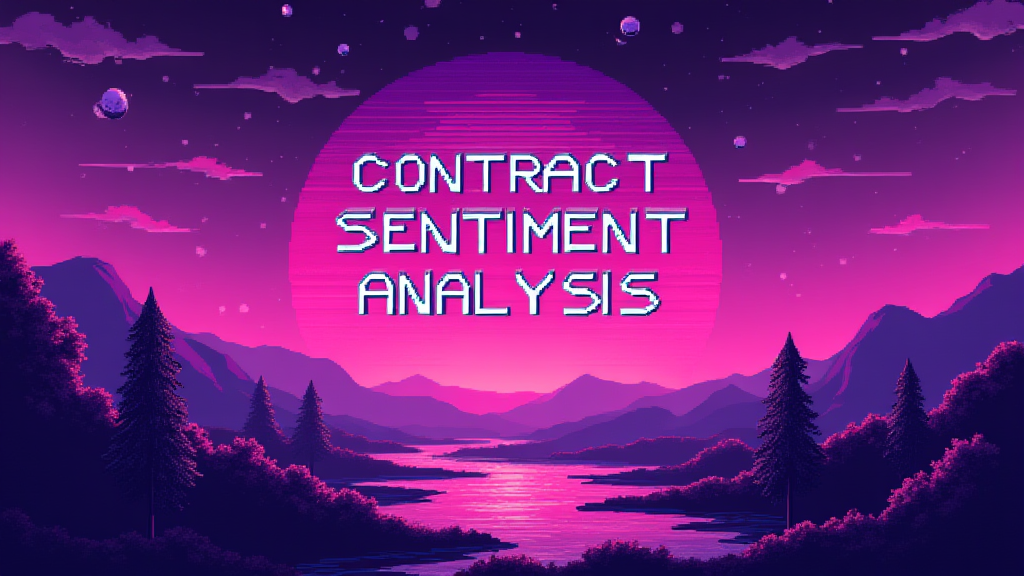Contract Sentiment Analysis: Unlocking Deal Insights

Published on: October 01, 2024
Contract Sentiment Analysis is a powerful technique that uses Natural Language Processing (NLP) and Machine Learning (ML) to evaluate the emotional tone and attitude expressed in contract documents. This advanced analysis helps sales and revenue operations teams gain deeper insights into the health and potential outcomes of deals.
Understanding Contract Sentiment Analysis 🧠
At its core, Contract Sentiment Analysis involves:
- Examining the language used in contracts
- Identifying positive, negative, or neutral sentiments
- Assessing the overall tone and implications for the deal
Why It Matters in Sales and Revenue Operations 📊
Contract Sentiment Analysis is crucial for several reasons:
- Risk Assessment: Identify potential roadblocks or issues early in the negotiation process
- Deal Forecasting: Improve accuracy in predicting deal outcomes and close rates
- Relationship Management: Gauge client satisfaction and engagement levels
- Process Optimization: Refine contract templates and negotiation strategies based on sentiment patterns
Key Components of Contract Sentiment Analysis 🔍
| Component | Description |
|---|---|
| Text Preprocessing | Cleaning and preparing contract text for analysis |
| Sentiment Scoring | Assigning numerical values to sentiment expressions |
| Entity Recognition | Identifying key parties, terms, and concepts in the contract |
| Trend Analysis | Tracking sentiment changes over time or across multiple documents |
Practical Applications in Sales and Revenue Ops 💼
Contract Sentiment Analysis can be applied in various ways:
- Deal Prioritization: Focus on high-potential deals based on positive sentiment
- Negotiation Tactics: Adjust strategies based on detected sentiment shifts
- Customer Success: Proactively address concerns identified through negative sentiments
- Revenue Forecasting: Enhance predictions by incorporating sentiment data
Challenges and Considerations 🚧
While powerful, Contract Sentiment Analysis comes with its own set of challenges:
- Contextual nuances in legal language
- Varying sentiment across different sections of a contract
- The need for domain-specific training data
- Balancing automated analysis with human expertise
Implementing Contract Sentiment Analysis 🚀
To effectively implement Contract Sentiment Analysis in your sales or marketing stack, consider the following steps:
- Choose the right NLP tools or platforms
- Develop a custom sentiment model tailored to your industry
- Integrate sentiment analysis into your CRM or contract management system
- Train your team to interpret and act on sentiment insights
- Continuously refine your model based on real-world outcomes
By leveraging Contract Sentiment Analysis, sales and revenue operations teams can gain a competitive edge, improve deal outcomes, and enhance customer relationships. As AI and NLP technologies continue to advance, the potential for deeper, more nuanced contract analysis will only grow.
Questions to Consider 🤔
As you explore implementing Contract Sentiment Analysis in your organization, ask yourself:
- How can we use sentiment insights to improve our win rates?
- What key indicators in contract sentiment correlate with successful deals?
- How can we balance automated sentiment analysis with human expertise in contract negotiation?
- What changes in our sales process could be driven by sentiment analysis findings?
















